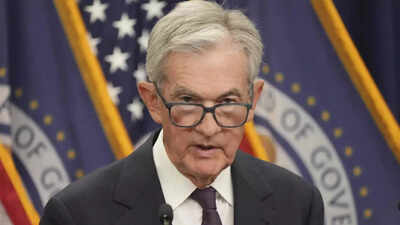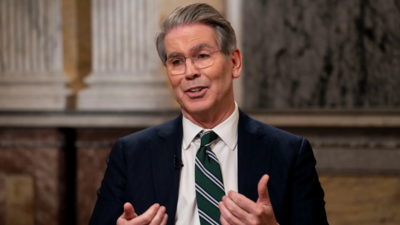
US Federal Reserve Chairman Jerome Powell-led Federal Open Market Committee (FOMC) on Wednesday cut the key benchmark rate by 25 basis points, bringing it down to the 3.75-4.00 per cent range. According to the FOMC statement, “uncertainty about the economic outlook remains elevated.”“Available indicators suggest that economic activity has been expanding at a moderate pace. Job gains have slowed this year, and the unemployment rate has edged up but remained low through August; more recent indicators are consistent with these developments. Inflation has moved up since earlier in the year and remains somewhat elevated,” it said.“In considering additional adjustments to the target range for the federal funds rate, the Committee will carefully assess incoming data, the evolving outlook, and the balance of risks. The Committee decided to conclude the reduction of its aggregate securities holdings on December 1. The Committee is strongly committed to supporting maximum employment and returning inflation to its 2 percent objective,” the statement said.Whilst the Federal Reserve has indicated potential additional rate reductions in December, the current lack of economic data creates additional uncertainty regarding their forthcoming decisions.This is the second consecutive rate cut by the central bank, aiming to safeguard against increasing employment market uncertainties, amid evident disagreements within the committee.The Fed’s statement indicated that committee members voted 10-2 to reduce the central bank’s primary lending rate.Fed governor Stephen Miran dissented, advocating for a larger 0.50 percentage point reduction, whilst Kansas City Fed president Jeff Schmid “preferred no change to the target range for the federal funds rate at this meeting,” according to the Fed’s statement.Experts had widely anticipated that the Federal Reserve’s rate committee will largely support a 0.25 percentage point reduction.The Federal Reserve elevated interest rates to approximately 5.3% between 2023 and 2024 to address the most significant inflation surge experienced in 40 years. A reduction in rates could eventually lead to decreased costs for various forms of borrowing, including home mortgages, vehicle financing, credit card debt and commercial loans.The timing is particularly challenging for the Federal Reserve, as employment growth remains slow whilst inflation continues to exceed their 2% objective. The situation is further complicated by the absence of crucial government economic indicators typically used for decision-making, including monthly employment statistics, inflation data and consumer expenditure reports, which are currently suspended due to the government closure.The rate reduction will strengthen the US economy, which continues to adjust to President Donald Trump‘s tariff policies, whilst providing officials additional time to assess the government shutdown’s impact.The political impasse between Republicans and Democrats continues nearly a month into the shutdown, resulting in the temporary cessation of most official statistical releases.The Federal Reserve operates independently with two primary objectives: managing inflation and unemployment rates through adjustments to its primary lending rate, whether increasing, maintaining, or decreasing it.Reduced rates encourage economic and employment growth, typically resulting in lower mortgage costs. Conversely, increased rates restrict economic activity and control inflation.According to an AFP report, recent statements from Federal Reserve officials indicate growing worry about employment market deceleration, prompting them to prioritise job creation despite inflation exceeding their target rate.Additionally, there remains ongoing tension regarding Trump’s efforts to influence Federal Reserve operations, alongside Treasury Secretary Scott Bessent’s public initiative to identify Powell’s successor when his chairmanship concludes in May.






